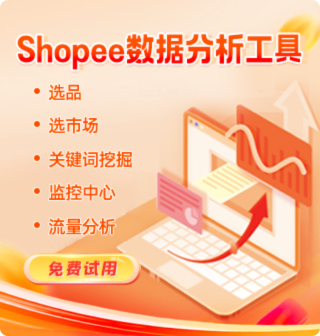-
用户156****6260
Shopee Advertising: A Detailed Guide for Sellers to Boost Sales and Visibility
In the competitive ecosystem of e-commerce, simply listing products on Shopee is not enough to guarantee sales. As millions of sellers compete for buyers' attention, leveraging Shopee’s advertising tools has become essential to stand out. Shopee advertising offers sellers a range of marketing solutions to increase product visibility, attract targeted traffic, and ultimately boost sales.
This article provides a comprehensive overview of Shopee advertising, practical strategies to leverage it effectively, and actionable insights to maximize return on investment (ROI).
1. What is Shopee Advertising?
Shopee advertising is a suite of paid promotional tools embedded within the Shopee platform that enables sellers to increase product exposure through targeted marketing campaigns. These tools help sellers place their products prominently on Shopee’s search results, category pages, and personalized recommendation sections.
Shopee’s advertising ecosystem is designed to be accessible for sellers of all sizes, with flexible budgets and options to customize campaigns based on objectives.
2. Main Types of Shopee Advertising
a) Shopee Ads (Keyword Advertising)
This is the most popular advertising option where sellers bid on keywords relevant to their products. When buyers search using these keywords, sponsored products appear at the top or within search results, increasing the chances of clicks and conversions.
How it works: Sellers select keywords, set bid prices, and allocate daily budgets.
Payment model: Cost-per-click (CPC) — sellers pay only when buyers click on their ads.
b) Discovery Ads
Discovery Ads appear on various key touchpoints, such as the homepage, category pages, and personalized feeds. Unlike keyword ads, these ads target buyers based on their browsing behavior and preferences, enhancing product discovery.
Targeting: Behavioral and demographic targeting.
Ideal for: New product launches or expanding audience reach.
c) Shopee Live Ads
Live streaming is a growing trend on Shopee. Sellers can promote their live sessions through ads, driving traffic to interactive selling events where they showcase products in real-time.
3. Benefits of Using Shopee Advertising
Increased Visibility: Sponsored products appear prominently, attracting more buyer attention.
Targeted Traffic: Ads reach shoppers with high purchase intent based on keywords or behavior.
Flexible Budgets: Sellers control how much they spend daily, making it suitable for various business sizes.
Data-Driven Optimization: Shopee provides detailed campaign analytics to refine targeting and bidding strategies.
Boost Sales and Rankings: Higher exposure can lead to more sales, which improves organic ranking over time.
4. How to Set Up Effective Shopee Advertising Campaigns
Step 1: Choose Campaign Objectives
Decide whether the goal is to increase brand awareness, boost sales for specific products, or clear inventory.
Step 2: Select Products to Advertise
Focus on bestsellers, new arrivals, or items with competitive pricing and attractive offers.
Step 3: Keyword Selection and Bidding
- Research high-traffic, relevant keywords using Shopee’s Keyword Tool or third-party tools.
- Start with moderate bids and adjust based on performance. Avoid overly generic keywords that waste budget.
- Use negative keywords to exclude irrelevant traffic.
Step 4: Budget Allocation
Assign daily budgets that align with your sales targets and cash flow. Monitor spend daily to prevent overspending.
Step 5: Monitor and Optimize
Track impressions, click-through rates (CTR), conversion rates, and cost per acquisition (CPA). Pause underperforming keywords, increase bids on profitable ones, and test different ad creatives.
5. Advanced Tips to Maximize Shopee Advertising ROI
1. Leverage Promotions and Coupons
Combining ads with Shopee’s platform promotions (e.g., flash sales, discount vouchers) drives higher conversion rates.
2. Use Data Analytics for Refinement
Analyze which keywords, time slots, and demographics yield the best results. Adjust bids and schedules accordingly.
3. Optimize Product Listings
Ensure product titles, images, and descriptions are clear, keyword-rich, and appealing since ads direct traffic to listings.
4. Test Multiple Campaigns
Run A/B tests with different keywords, ad types, and targeting to identify top-performing strategies.
5. Consider Seasonal Trends
Boost ad spend around major shopping festivals (e.g., 9.9, 11.11, 12.12) when buyer traffic spikes.
6. Common Mistakes Sellers Should Avoid
Overbidding on Broad Keywords: Leads to wasted budget with low conversion.
Ignoring Negative Keywords: Causes irrelevant clicks and higher costs.
Neglecting Post-Click Experience: Poor product images or unclear info reduce conversion even if ads get clicks.
Setting and Forgetting Campaigns: Ads require continuous monitoring and adjustment.
Underutilizing Shopee’s Analytics: Failing to analyze data limits improvements.
Conclusion
Shopee advertising is a powerful tool that, when used strategically, can significantly elevate a seller’s presence and sales on the platform. Understanding the different ad types, setting clear goals, selecting the right keywords, and continuously optimizing campaigns based on data are essential steps to success.
For sellers serious about growing their Shopee business, investing time and resources into mastering Shopee advertising can deliver measurable results, increase market share, and build sustainable growth. As Shopee’s ecosystem evolves, staying informed about new advertising features and trends will be key to maintaining a competitive edge.

